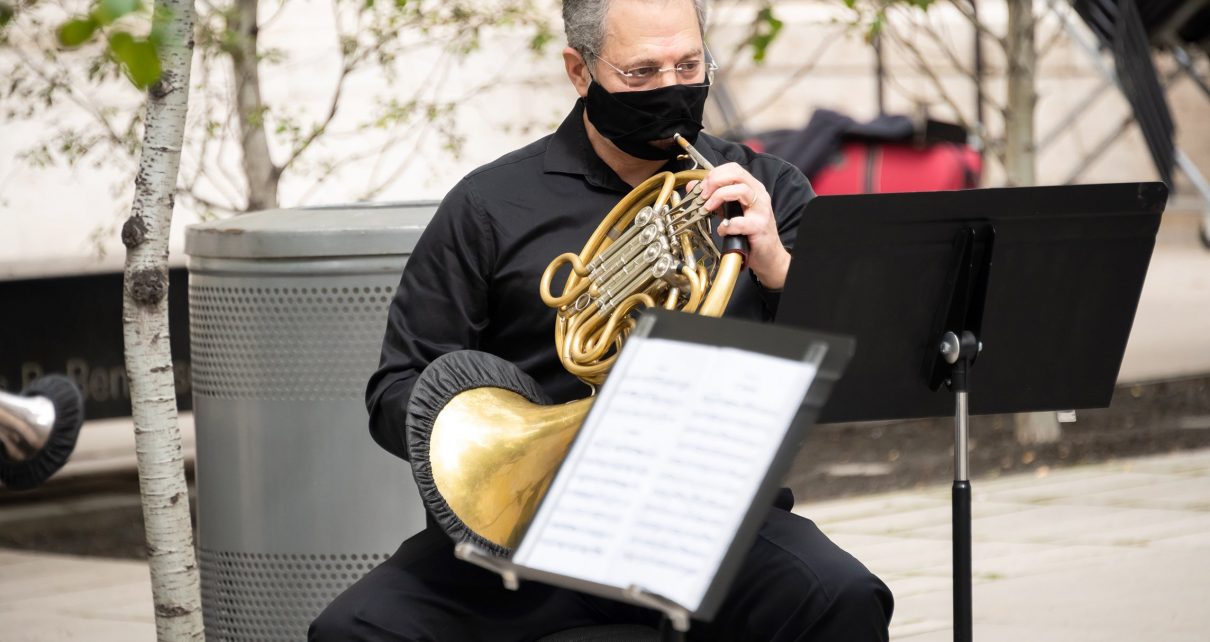The items below are highlights from the free newsletter, “Smart, useful, science stuff about COVID-19.” To receive newsletter issues daily in your inbox, sign up here.
The U.S. Centers for Disease Control (CDC) this week broadened its definition of a “close contact” with an infected person, thereby expanding “the pool of people considered at risk of contracting the novel coronavirus,” writes Lena H. Sun at The Washington Post (10/21/20). To be considered a “close contact,” the 15-minute exposure time for individuals within six feet is now cumulative or total time during a 24-hour period, not sequential, consecutive time. State and county health departments use the definition for contract tracing efforts, the story states. The CDC’s change “is likely to have its biggest impact in schools, workplaces, and other group settings where people are in contact with others for long periods of time,” Sun writes.
Epidemiologists offer advice on how to avoid SARS-CoV-2 while voting or working as a poll worker in this 10/14/20 piece by Jim Daley for Scientific American. Beyond wearing masks, socially distancing, and disinfecting surfaces and voting equipment, tips in the piece include: 1) choose a booth that is next to an empty booth and wipe down the booth before touching anything in it; 2) vote at off-hour times that could be less crowded; 3) participate in “early voting” if available in your region; and 4) study up on your ballot choices so once you’re in the booth, you can vote quickly.
SARS-CoV-2 cares not if you live in a “red state” or a “blue state” in the U.S., as this dramatic, animated graphic by web developer Dan Goodspeed illustrates. The graphic, based on data from The New York Times, shows U.S. case growth over time, from June to present, sorted by U.S. state and political leaning.
The Center for Digital Health, a partnership between Brown University’s Medical School and a Rhode Island health care system, has published an easy-to-use online calculator for what appears to be one’s risk of catching SARS-CoV-2 in various settings. The site asks visitors for such information as zip code, planned activity, duration of activity, and percent of people wearing a mask.
A 10/16/20 essay in Science sums up the latest evidence for children’s limited role in spreading SARS-CoV-2 and the harms that result from school closures. Matthew D. Snape of the University of Oxford, who studies vaccines for children, and pediatrician Russell M. Viner of University College London conclude that re-opened schools so far play “only a limited role in transmission when mitigation measures are in place.” The writers discourage the use of school closures to address future waves of COVID-19 for various reasons. “Emerging evidence suggests” that outbreaks of SARS-CoV-2 among children are not a key route for spreading the coronavirus, the authors write. “When household outbreaks of infection have occurred, it appears that children were responsible for only a small minority of household introductions of the virus,” the authors write. However, efforts to curb the pandemic have resulted in indirect “harms being disproportionately borne by children and teenagers,” the essay states. The harms include school closures, reduced skills, illness due to kids not getting vaccinations for diseases such as measles, a rise in kids getting injured at home, and possible mental health effects. Schools should remain vigilant and keep transmission-prevention measures in place, the essay suggests, such as face mask wearing, creating separate cohorts or “bubbles,” regular screenings of students and staffers, and social distancing.
The rise in SARS-CoV-2 infections in the U.S. is now driven by “small gatherings in people’s homes,” according to officials with the U.S. Centers for Disease Control, reports Carolyn Crist for WebMD (10/14/20). People should continue to wear face-masks and to practice social distancing “since most people have still not been exposed to the coronavirus worldwide,” the researchers suggest, Crist writes.
Some trombone, flute, trumpet, saxophone, and tuba players in the U.S. have devised masks that allow them to “reduce the risk of COVID-19 without silencing the music,” reports Laura Ungar for Kaiser Health News. Improvisations include pantyhose, pillowcases, air filters, magnets, bolts of fabric, and “surgical masks with slits cut in them,” the story states (10/16/20). The photos in this piece are fun.
You might enjoy, “Vaccines I’m Working On,” by Jack Handey at The New Yorker (10/19/20).



